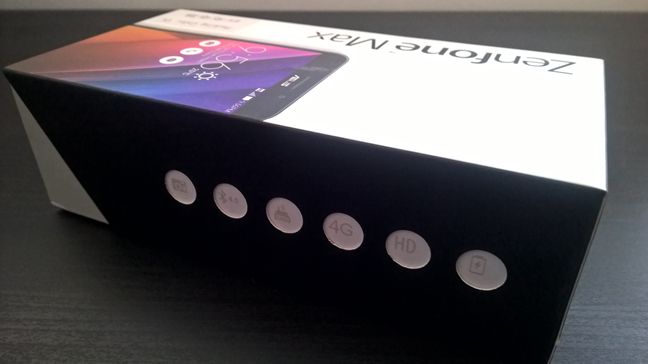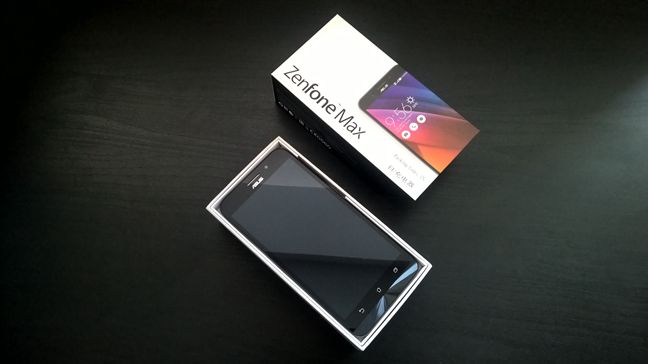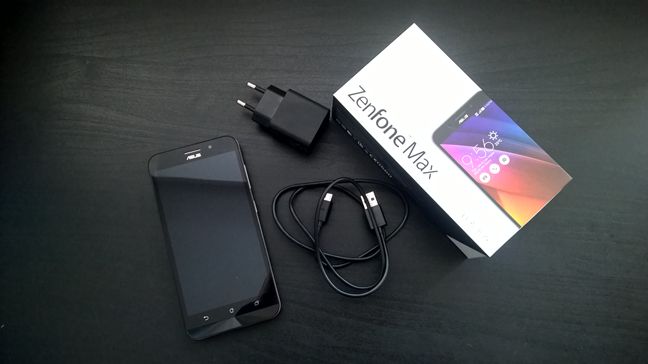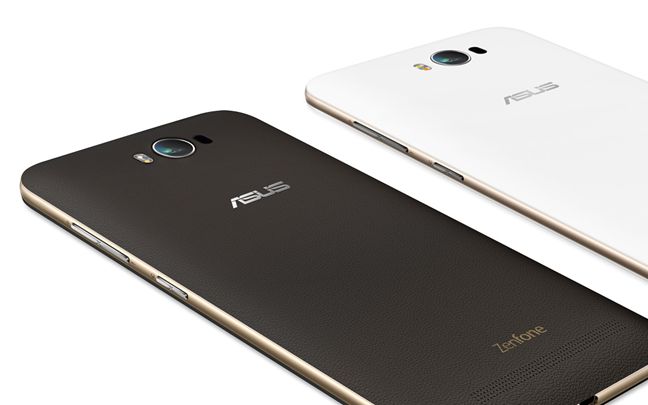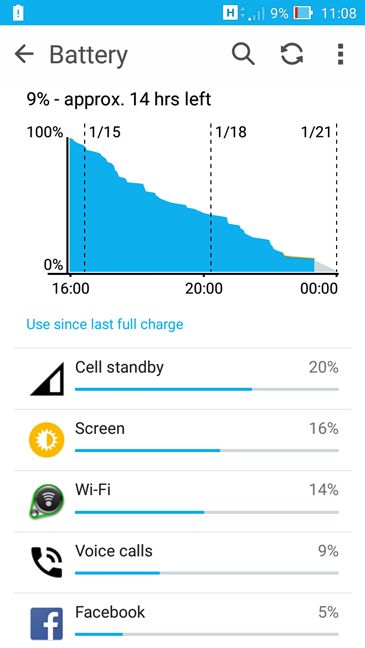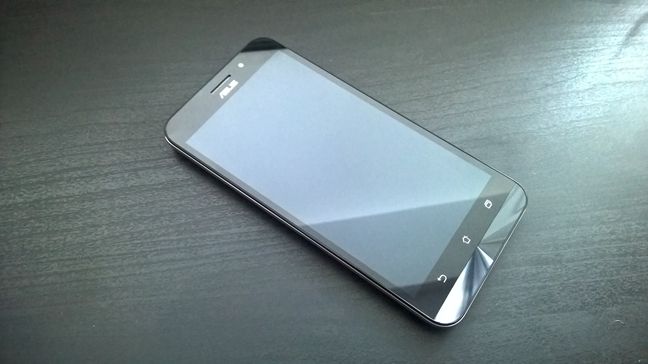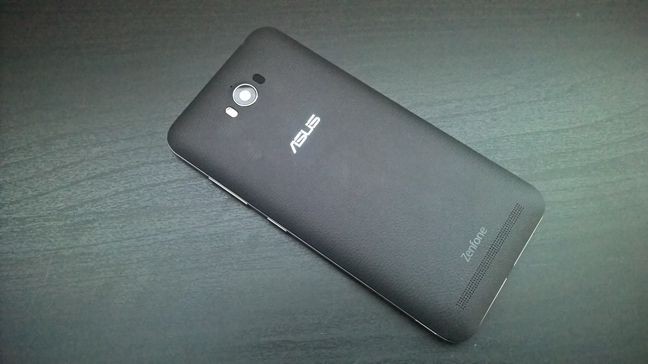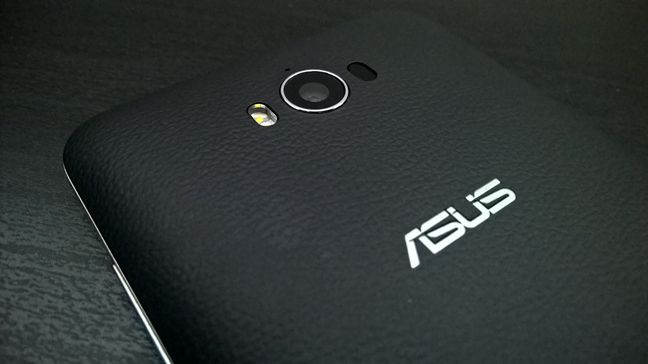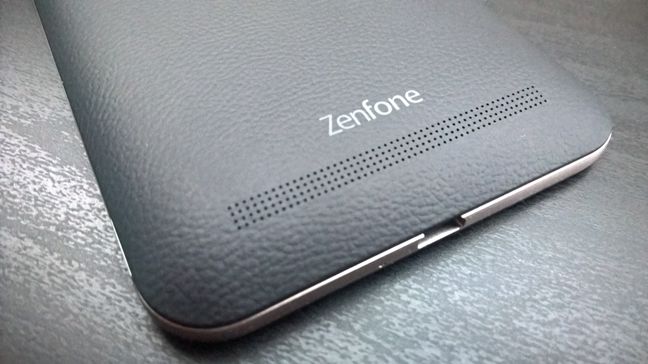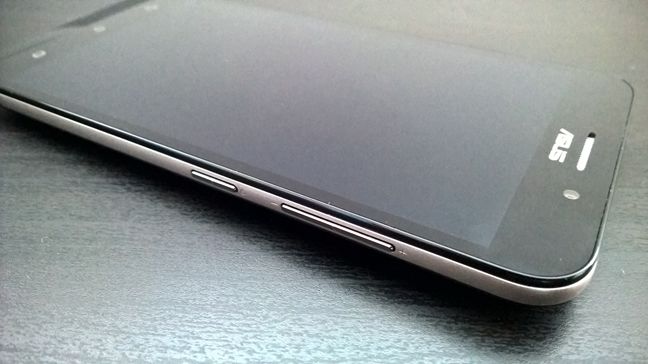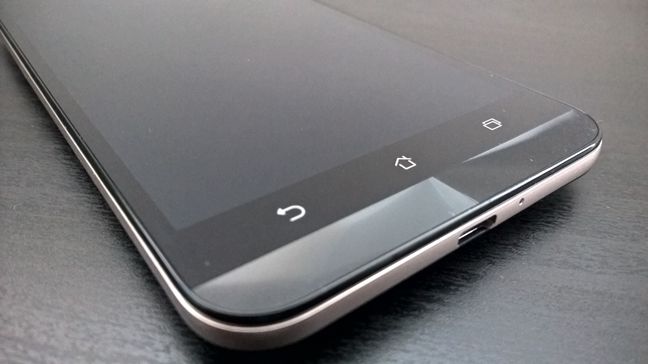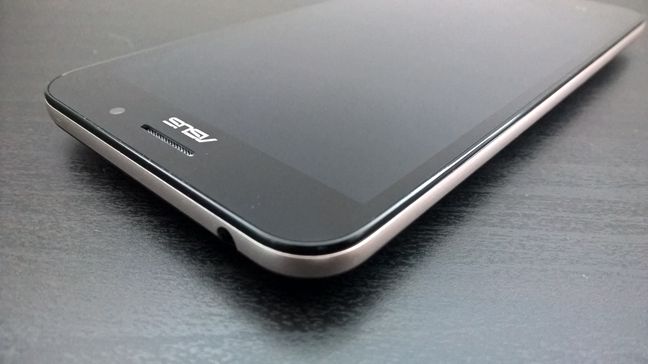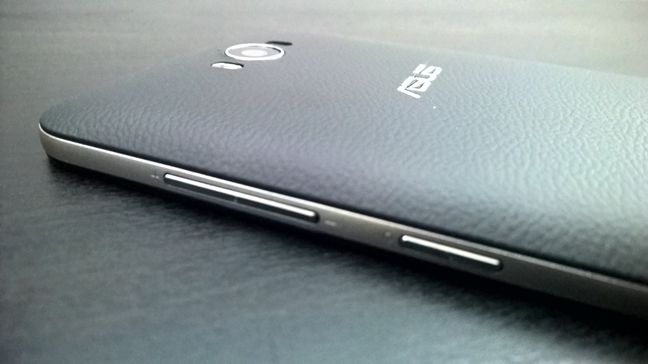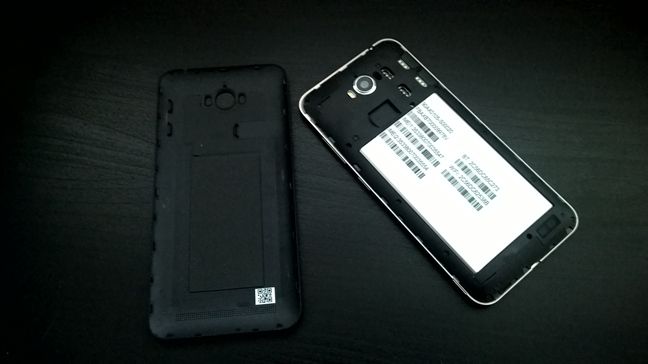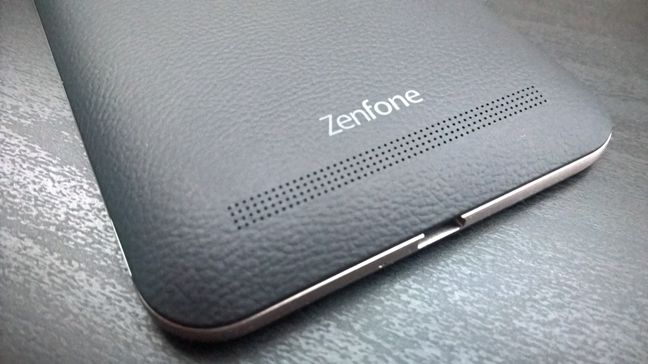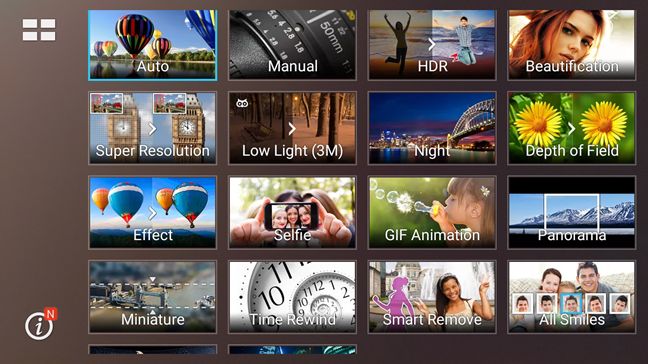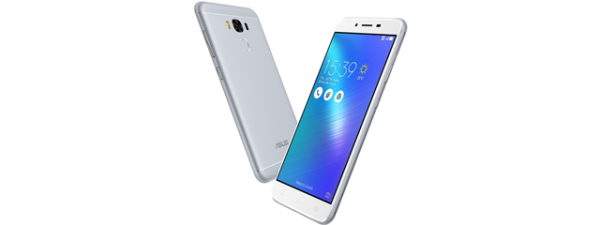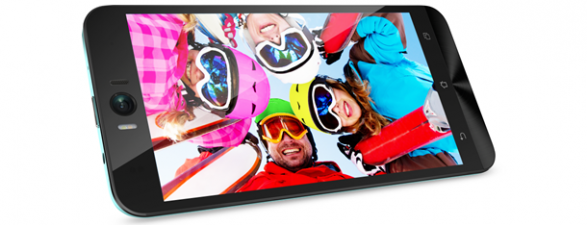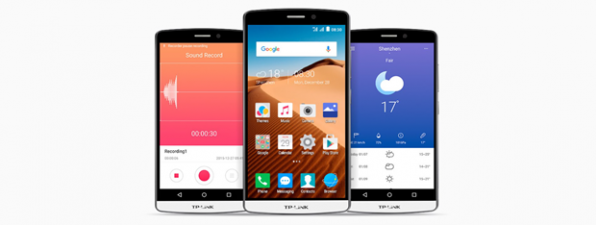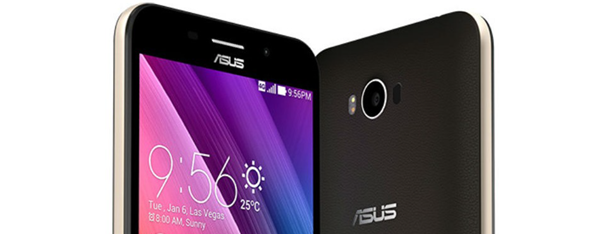
Over the last few years, smartphones have evolved with a mind boggling speed. They went all the way from having screens of 3 or 4 inches, single core processors and maximum 512MB of RAM memory, to having screens of 5 inches or more, quad core processors and at least 1GB of RAM. And let's not get started about the capabilities of their cameras and how many megapixels they pack. While we get more power and performance from our smartphones, there is one area that just can't keep up with the pace of this evolution: it's those darn batteries. The capacity of batteries has not improved too much even though batteries nowadays do charge faster than they used to. Also, smartphone manufacturers don't pack very large batteries because they take a lot of space. ASUS has recently decided to surprise us all and release ASUS ZenFone Max (ZC550KL) - a smartphone that has a whooping 5000 mAh battery built-in. We have used this smartphone for about two weeks and we would like to share our experience with you, in this review:
Hardware specifications and packaging
The ASUS ZenFone Max (ZC550KL) comes packaged inside a premium-looking glossy box. On the top side you get to see a printed image of the smartphone, while on the sides you'll find some information about its most important specifications.
Slide the external cover and you get to see the actual ASUS ZenFone Max, sitting on top of an inner cardboard tray.
Underneath the ASUS ZenFone Max, you will find the usual accessories: the power charger, a detachable USB to microUSB cable, as well as the warranty card and the quick start guide.
The ASUS ZenFone Max is available in two color variants that fit in style with both casual and business users: Pure White and Osmium Black. As you can see from our images, we tested an Osmium Black colored ASUS ZenFone Max, a color variant that fits anyone.
The ASUS ZenFone Max sports a 5.5 inches display with an HD resolution of 1280x720 pixels and an IPS panel. The IPS technology assures you from the start that you will get wide viewing angles (up to a maximum of 178 degrees), good color reproduction and a high contrast. ASUS decided to protect the display with Corning Gorilla Glass 4, so it's not prone to gather scratches very easily.
In terms of processing power, the ASUS ZenFone Max is powered by a Qualcomm Snapdragon 410 MSM8916 quad core processor that runs at 1.2 GHz, while the graphics are handled by an Adreno 306 video chip with OpenGL ES 3.0 that works at 400 MHz. You also get 2GB of RAM memory and 16GB of internal storage space that can be extended with a MicroSD card of up to 64 GB.
The ASUS ZenFone Max includes a rear 13 megapixels camera with laser autofocus and dual-LED flash that offers panorama and HDR capabilities, while on the front you get a 5 megapixels camera. Both these cameras have an F2.0 aperture that will come in handy when you take low light photos.
As for the connectivity options available on the ASUS ZenFone Max, you should know that it includes a microUSB 2.0 port, a 3.5 mm audio jack, a Bluetooth v4.0 chip and a wireless network chip that's capable to connect only to 2.4 GHz Wi-Fi networks that use the 802.11 b/g/n standards. Another feature we see quite often at ASUS' smartphones and one that's also present on the ZenFone Max is the fact that you can simultaneously use two SIM cards. The downside is that only the first SIM offers support for 4G networks, the second SIM being able to connect only to 2G/3G mobile networks.
The strongest point of the ASUS ZenFone Max specs is its battery. This smartphone features a mammoth sized non-removable lithium polymer battery of 5000mAh. Yes, you've heard it right! It's a smartphone that has a tablet's battery, so we expect it to offer quite an impressive autonomy, but we'll talk more details later in this review.
The 5.5 inch display put together with the very large battery, directly impact the dimensions of the ASUS ZenFone Max. In the metric system, this smartphone is 77.5 x 156 x 10.55 mm in width, depth and height, while in the imperial system it's dimensions are 3.05 x 6.14 x 0.41 inches. The ASUS ZenFone Max weighs 202 grams, which is about 7.12 ounces.
If you'd like to get more details about all the specifications of the ASUS ZenFone Max, check it's official web page, here: ASUS ZenFone Max Specifications.
The ASUS ZenFone Max is, by all accounts, a mid-range smartphone, with one very important exception: its autonomy. The huge 5000 mAh battery is its strong point and it will surely make it stand out amongst its competition.
Design and build quality
If there's one thing we really appreciate from ASUS is the fact that all their devices are consistent in design, making them very easily recognizable. That's true for their Republic Of Gamers devices for instance, and it's also true for their ZenFone family for smartphones. The ASUS ZenFone Max follows the same design patterns we've seen on other ZenFones.
The top side of the screen holds the ASUS logo placed right below the earpiece grille, the bottom area holds the capacitive Android buttons and features the brushed concentric circles finish that's already a trademark for ASUS' ZenFones. The whole body is held together by a plastic golden rim with a metallic look.
The ASUS ZenFone Max might be a mid-range smartphone, but its design makes it look a bit premium and the back cover adds to that feeling. The Osmium Black variant we tested has a back cover with a leather like texture that is both visually appealing and provides a very good grip.
On the upper area of the back cover you'll also find the camera lenses tucked between the dual LED flash and the laser autofocus sensor. Towards the center, you get the ASUS logo written in an embossed font.
The bottom side of the backplate holds the large side-to-side speaker grille and the Zenfone trademark printed in gray.
Unlike on other ZenFones, ASUS decided to go safe with the placement of the power button and volume rocker on the ZenFone Max. The Zenfone 2 for instance, had its power button placed on the top rim and its volume rocker on its backplate. For the ZenFone Max, ASUS placed both the power button and the volume rocker on the right edge of the smartphone - a classic location. This choice makes sense,, considering the smartphone's large body and it will probably please most users.
The bottom edge of the ASUS ZenFone Max holds only the microphone pinhole and the MicroUSB port that's used for both charging the smartphone and connecting it to a computer. On the bottom front side, you will find the three Android navigation keys for Back, Home and Recent Apps. They use the same nice looking icons we've seen all over the ZenFone family, but they have a flaw in our opinion: they are not backlit, meaning that they are a bit hard to find in the dark.
The left edge is completely free of any ports or buttons, while the top edge of the ASUS ZenFone Max features only the 3.5 mm audio jack and nothing more.
Another interesting design approach that we appreciate at the ASUS ZenFone Max is that its back panel is slightly curved towards the edges making the smartphone look and feel thinner than it actually is. This is a very good choice in terms of design and ergonomics, one that's consistent among all the ZenFone smartphones.
The ZenFone Max offers a large 5.5 inches screen that features an IPS panel with an HD resolution of 1280x720 pixels. The built-in IPS technology means wide viewing angles and makes sure that you get to see bright colors with a good contrast ratio. Some people might think that the 1280x720 pixels resolution might be too small for such a large screen. After all, it's a 5.5 inch display. However, we believe that ASUS made this choice in direct correlation with the smartphone's strong point: its autonomy. A smaller resolution for the screen means that less battery power is needed for it to be lit. Put that together with the huge 5000 mAh battery and you will probably have a very energy efficient device.
The ASUS ZenFone Max is a mid-range smartphone in terms of specifications and price. Even if it's not a flagship, ASUS managed to build a very good looking smartphone. It's a device that, just like any smartphone from the ZenFone family, will draw people's attention and will surely be recognized instantly by anyone who has seen a ZenFone before.
The smartphone experience on the ASUS ZenFone Max
In terms of the phone experience, the audio calls we had on the ASUS ZenFone Max were of good quality. We had no issues in understanding what the people whom we talked to were saying, although they did sound a bit muffled. It's also worth noting that the maximum volume level during phone conversations is quite loud. Another meaningful phone experience aspect we'd like to mention is that the mobile network reception seems to be good, but not extraordinary. Our main cell operator offers 4G connectivity in the geographical area we live in, but the radio signal isn't that good. However, the ASUS ZenFone Max managed to keep a steady mobile connection.
Like many other ZenFone smartphones, the ASUS ZenFone Max also gives you the option to simultaneously use two SIM cards, either from the same mobile operator or from two different operators. This option can prove to be a real deal maker for some people. However, note that the first SIM supports 4G network connections, while the second SIM works only on 3G networks.
The audio quality when listening to music or watching videos is good if you're using a pair of headphones and decent if you resort to the smartphone's built-in loudspeaker. In the latter case, the maximum sound level is a bit lower than you'd expect, although the good side of this is that you won't hear any distortions.
As for the operating system, the ASUS ZenFone Max comes with Android 5.0.2 Lollipop and ASUS' proprietary ZenUI 2.0 user interface pre-installed. The ZenUI is a custom built user interface that brings many usability and design improvements to the standard Android experience.
Finally, the huge 5000 mAh battery is more than impressive. We were blown away when we saw that this smartphone managed to keep running for 5 days and a couple of hours. We were expecting to see better than average autonomy, but we really did not expect to see it last for a bit more than 5 days. It's an extraordinary achievement that very few smartphones can brag about. Of course… what you should keep in mind is that the ASUS ZenFone Max went on working for 5 days on a single charge only when we used it like regular people would. A few hours of web browsing each day, apps like Facebook, Twitter and Whatsapp used for a couple of minutes each day and a bit of casual gaming. If you're going to use it to play demanding games or watch high definition videos for many hours, you should expect the ASUS ZenFone Max to last you for about 2 days, which is still a very good result.
The ASUS ZenFone Max is a mid-range Android smartphone that offers a good sound quality during phone calls, as well as a decent audio quality during music-listening sessions or while watching movies. However, its greatest feature is its incredible autonomy - the huge 5000 mAh battery keeps you going for around 5 days on a single charge, in normal usage conditions.
The camera experience on the ASUS ZenFone Max
The main camera found on the ASUS ZenFone Max has a 13 megapixels sensor that can take photos at a maximum resolution of 4096x3072 pixels and features ASUS' PixelMaster technology. In theory, this technology mixes the power of the hardware, software and that of the optics in order to obtain better images in most situations , especially for photos you take in low light conditions. We couldn't find the exact model of the camera found on the ZenFone Max but it feels very similar to the cameras we saw on the ASUS ZenFone 2 and on the ASUS Zenfone 2 Laser , so we suspect it to use the same Toshiba sensor we saw on these smartphones. The main camera from the ZenFone Max is aided by a dual LED flash in low light conditions that also helps you take portrait photos that look natural in terms of colors.
We found the photos we took with the ASUS ZenFone Max to be quite good in terms of details and colors. However, the photos we captured in low light conditions look a bit noisy if taken without the aid of the flash, while the outdoor photos seem to be oversaturated in bright areas. Don't interpret these as being deal breaker flaws as they aren't. We've seen these problems at most of the smartphones we reviewed here at Digital Citizen and most mobile devices, even premium ones, have these issues.
It's also worth mentioning that, just like other ZenFone smartphones, the ASUS ZenFone Max offers a camera app that includes lots of special photo modes you can play with. Among them, the options we found to be most useful are the Manual controls and the fact that you can capture panoramas and take photos using HDR.
The front camera found on the ASUS ZenFone Max is modest when compared to its rear one, but its 5 megapixels are more than enough for video chat and selfies.
Feel free to browse the photo gallery below: we've included the photos we took with the ASUS ZenFone Max taken both outdoors and indoors, photos we took in low light with and without flash, as well as a panorama and a few HDR photos. Note however, that for most of these sample photos we didn't use any special camera modes and instead, we relied on its auto settings.
In terms of video options, the main camera of the ASUS ZenFone Max is capable of recording Full HD videos at 1920x1080 pixels and 30 frames per second. They have a video bit rate of 15 Mbps and an audio bit rate of 81 Kbps. The ASUS ZenFone Max can also digitally stabilize videos, but in order to do that, you will have to accept a lesser resolution of 720p.
To get a better idea of how the ASUS ZenFone Max fares when recording a video with moving objects, check this sample we took:
As usual, we also recorded a static panorama by moving the smartphone while we stood still. By watching this video, you can see how the ASUS ZenFone Max does when recording static videos, with small amounts of movement involved.
The ASUS ZenFone Max offers a good camera that's able to take good photos and record good quality videos in most conditions. We appreciate the wealth of camera modes and settings ASUS made available on this smartphone, even if it's not a high-end device. Many smartphone manufacturers choose to offer only a handful of camera options for their mid-range or budget devices, but that's not the case with ASUS. However, low light photos suffer from a bit of noise, while outdoor photos have a tendency to be oversaturated in bright areas.
Read the next page of this review to learn more about the software installed on the ASUS ZenFone Max and find the results it had in our benchmarks.


 27.01.2016
27.01.2016 